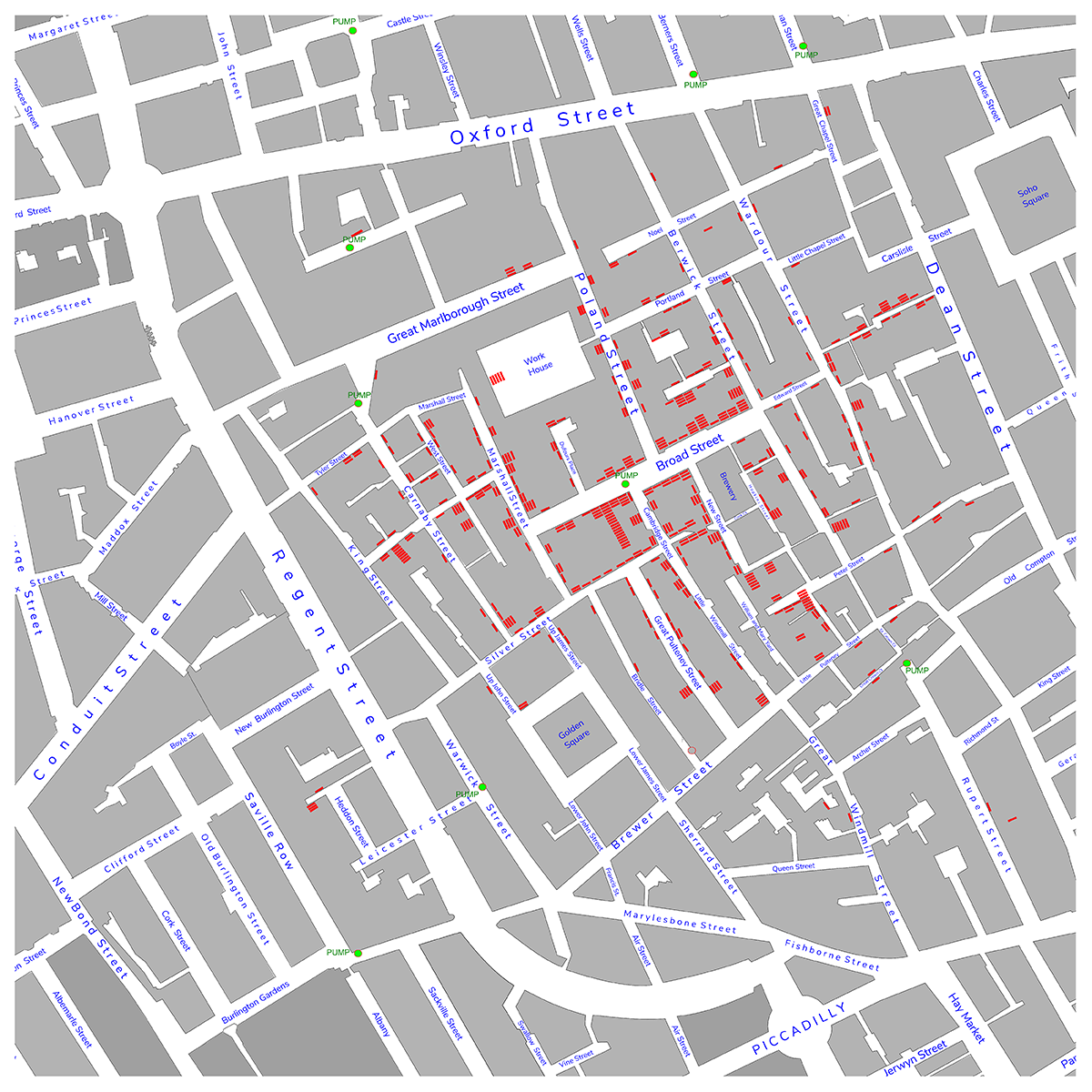Transmission Time Machine: Pump It Up
How John Snow exposed the source of the 1854 cholera outbreak – and had a lasting impact on public health
In the mid-19th century, the bustling streets of London were plagued by cholera – the silent killer, but one event in particular would trigger the birth of modern epidemiology: The 1854 Broad Street outbreak in Soho, London. Louis Pasteur was still a few years away from proving germ theory and it would be another three decades until Robert Koch identified Vibrio cholerae as the bacterium that causes cholera. At the time, the prevailing belief was that cholera spread through miasma – or “bad air” caused by decomposing matter.
However, anesthesiologist – and skeptic of the miasma theory – John Snow believed cholera was spread via contaminated water. So, map in hand, Snow took to the streets of Soho, interviewing residents who had fallen victim to the disease and plotting household cases – and water pumps – on the map, looking for an association between the distribution of cases and location of three water pumps.
Lo and behold, a common thread emerged: Household cases were more abundantly distributed around the Broad Street pump. When questioned, residents reported they avoided one of the other pumps due to contamination and the other was inconveniently located. The Broad Street water pump was the primary source of water for residents – and the sole common factor between infected patients in the vicinity (1).
Snow presented his conclusions to the local authorities, convincing them to remove the handle of the pump and render it useless. Simple, yet effective. Following its removal, cholera cases plummeted and the outbreak tailed off. Though yet to be proved, Snow was a supporter of germ theory, and his investigation provided compelling evidence to support the idea that cholera was transmitted by drinking water contaminated with a germ. It was later discovered that a nappy from a baby likely infected with cholera had been washed in water that had been emptied into a cesspit that leaked into the Broad Street well.
The outbreak may seem like a distant tale from the annals of history, but its impact reverberates to this day, emphasizing the importance of community involvement in public health, social determinants of health, and evidence-based policy and practice. Though modern scientists have more advanced methods at their disposal, Snow’s work provided the basic foundation on which modern epidemiology could stand and highlighted the importance of tracking where and how a disease is spreading to help identify the source. After all, once the source is found, you can implement a rapid response to curb further spread – if only all outbreaks could be prevented with a hefty spanner.
Reference
J Snow, “On the Mode of Communication of Cholera” (1855). Available at: bit.ly/3pPP4L8.






